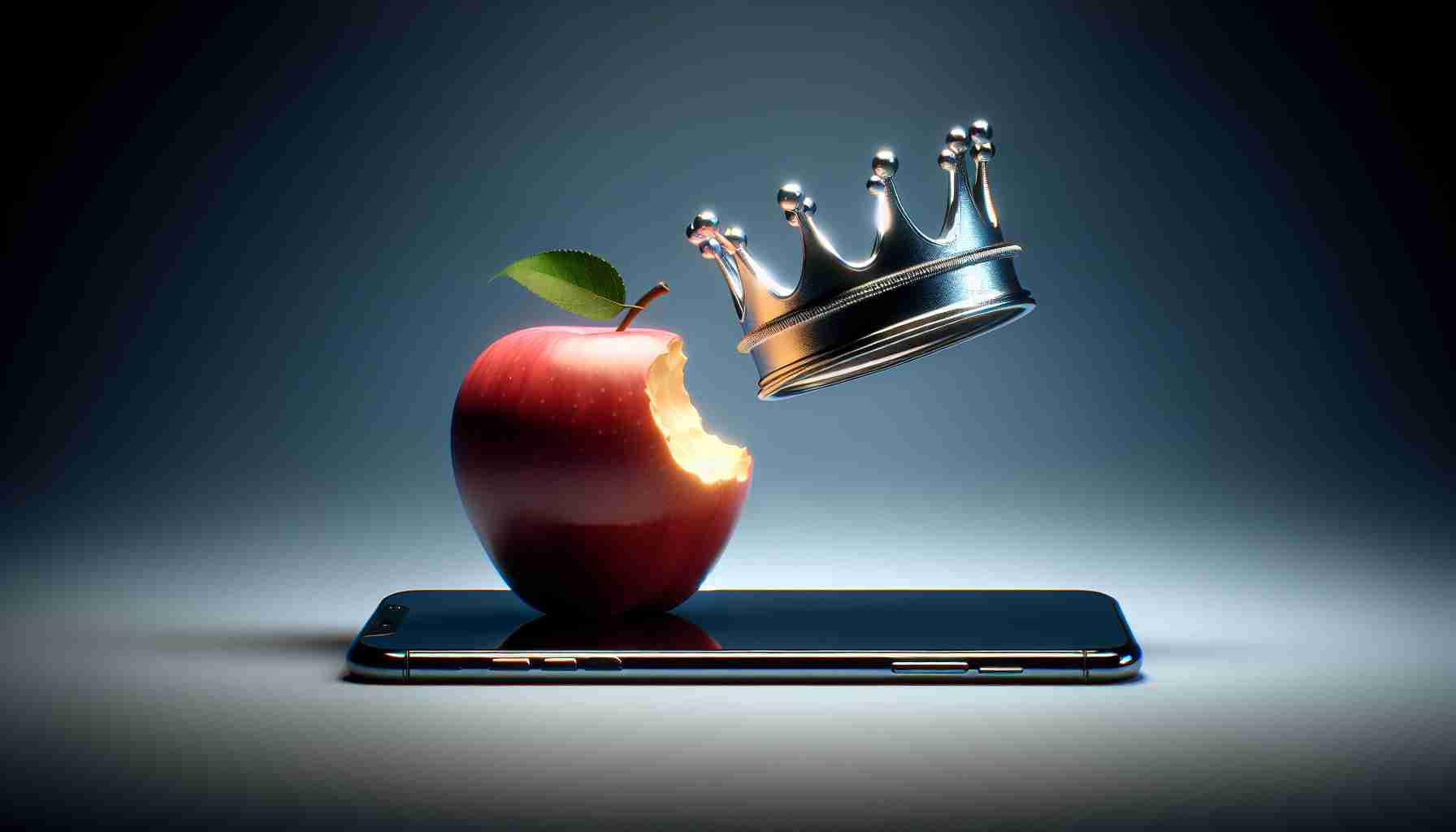While Apple has long been a dominant force in the smartphone industry, recent data from IDC reveals a shift in market dynamics. After surpassing Samsung to claim the top spot as the world’s largest smartphone manufacturer at the end of 2023, Apple’s fortunes have taken a downturn. This setback comes as the company experiences a decline in year-over-year shipments, dropping it to the second position.
IDC’s analysis of smartphone shipments in the first quarter of 2024 shows that although the overall market is witnessing modest growth, Apple is not riding the same wave. With 50.1 million smartphones shipped during this period, Apple lags behind Samsung’s 60.1 million. Consequently, Samsung has now regained its position as the leader in smartphone shipments, holding a 20.8% share compared to Apple’s 17.3%.
Interestingly, while Samsung experienced a slight decrease in sales during Q1, Apple’s decline was far more pronounced and unexpected. Its shipments in 2024 have plummeted by 9.6% compared to the previous year. In contrast, the smartphone market as a whole has witnessed an impressive year-over-year growth of 7.8% in the first quarter.
A notable trend emerges from the IDC report, favoring new and resurgent Chinese original equipment manufacturers (OEMs). Xiaomi, after a period of contraction, has made a remarkable comeback with a 33.8% increase in annual shipments. Similarly, Trassion, the parent company of brands like Infinix and Itel, has experienced an astounding 84.9% surge in shipments, securing the fourth position overall. Oppo, although historically stable, has encountered challenges, with an 8.5% drop and a struggle to retain its fifth place position.
The absence of Huawei, which briefly competed with Samsung for the top spot, is noteworthy and attributed to Western sanctions severely impacting its business. Additionally, the rise of Chinese OEMs signals the region’s dominance in smartphone manufacturing and user base. Despite not operating in the lucrative US market, these Chinese brands have managed to attain remarkable success.
Speculations arise regarding Samsung’s budget phone offerings, which Apple fails to match. However, IDC points out that consumers are increasingly willing to invest in more expensive phones, intending to use them for longer periods. Moreover, Samsung’s extended support periods for its premium devices may also contribute to their appeal.
As the smartphone landscape continues to evolve, the battle for market supremacy intensifies. While Apple and Samsung have a presence in China, competition remains fierce. With the rise of Chinese OEMs and shifting consumer preferences, the industry is in a state of constant adaptation and innovation.
The smartphone industry is a highly competitive market that is constantly evolving. According to recent data from IDC, Apple, which has long been a dominant force in the industry, has experienced a setback in its market position. After surpassing Samsung to become the world’s largest smartphone manufacturer at the end of 2023, Apple has seen a decline in year-over-year shipments, dropping it to the second position.
During the first quarter of 2024, Apple shipped 50.1 million smartphones, lagging behind Samsung’s 60.1 million. This has resulted in Samsung regaining its position as the leader in smartphone shipments, with a 20.8% market share compared to Apple’s 17.3%.
What is interesting to note is that while Samsung experienced a slight decrease in sales during this period, Apple’s decline was much more significant and unexpected. Apple’s shipments in 2024 have plummeted by 9.6% compared to the previous year. In contrast, the overall smartphone market has witnessed a year-over-year growth of 7.8% in Q1.
The IDC report highlights a notable trend favoring Chinese original equipment manufacturers (OEMs). Xiaomi, after a period of contraction, has seen a remarkable comeback with a 33.8% increase in annual shipments. Trassion, the parent company of brands like Infinix and Itel, has also experienced an astounding 84.9% surge in shipments, securing the fourth position overall. Oppo, while historically stable, has encountered challenges, with an 8.5% drop in shipments.
The absence of Huawei, which briefly competed with Samsung for the top spot, is noteworthy. Western sanctions have severely impacted Huawei’s business, leading to its decline in the market. This absence further highlights the dominance of Chinese OEMs in both smartphone manufacturing and user base.
Speculations have arisen regarding Samsung’s budget phone offerings, which Apple fails to match. However, IDC points out that consumers are increasingly willing to invest in more expensive phones that they can use for longer periods. Samsung’s extended support periods for its premium devices may also contribute to their appeal.
As the battle for market supremacy intensifies, the smartphone industry continues to adapt and innovate. While Apple and Samsung have a presence in China, competition remains fierce. The rise of Chinese OEMs and shifting consumer preferences are driving the industry’s constant evolution.
The source of the article is from the blog yanoticias.es
